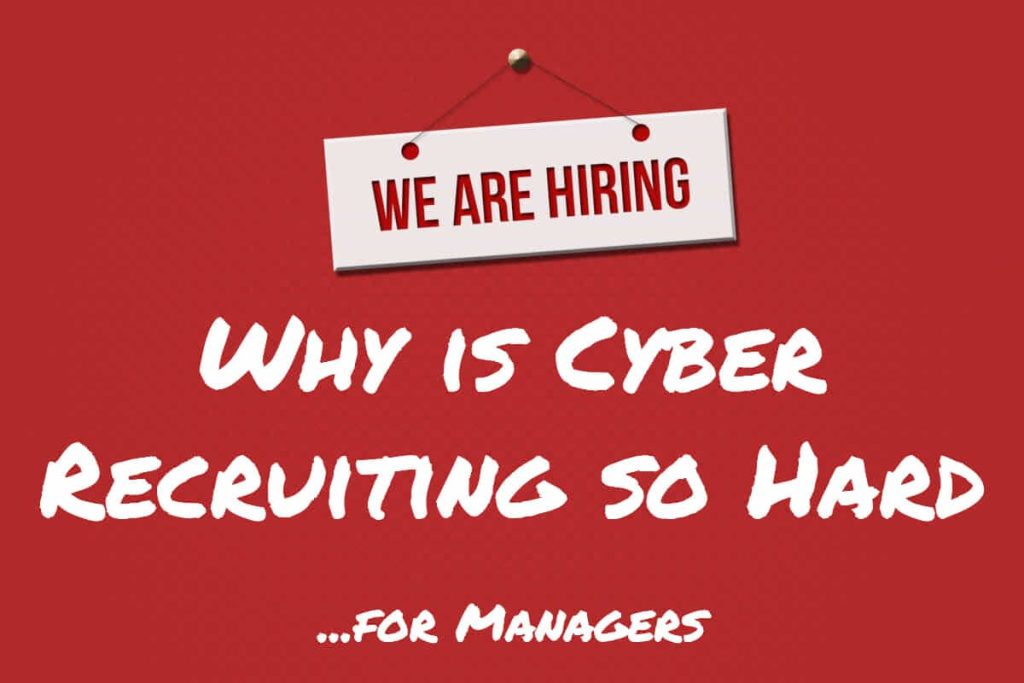The future of cyber security is an ever-evolving and increasingly important field. With the rise of digital technology, cyber security threats have become more prevalent and damaging to individuals, businesses, and governments alike. This has made it essential for all these entities to remain vigilant in protecting their information assets.
In this blog post, we will provide an overview of the current cyber security threats and discuss the emerging technologies that are being developed to improve cyber security. Let’s review the future of cyber security technologies that may help protect you against these dangerous threats.
Ready to Get Hired? Upload Your Cyber Security Resume Today!
The Current State of Cyber Security
In order to anticipate the future of cyber security, it’s important to first have an understanding of its current state. Today’s global cyber security landscape is changing rapidly. Malware, phishing, ransomware, data breaches, and other malicious cyber activities are all increasing in sophistication and prevalence. The current security defense will become obsolete in the near future as more zero-day attacks and advanced persistent threats are leveraged by adversaries. And, as industry experts look to develop and integrate new technologies in cyber security solutions, adversaries are also continuously innovating their attack vectors.
As a result, the future cyber security job market is also anticipated to grow in the incoming years. According to Grand View Research, in 2022 the global cyber security market, valued at $202.72 billion, is only projected to expand even further to 2030.
Current and Future Attack Methods
Today’s digital landscape is constantly evolving and is more hostile than ever. Over 2,200 digital attacks happen each day, nearly 1 cyberattack every 39 seconds. Some of today’s common digital security threats include:
- Malware & Ransomware
- Denial of Service Attacks
- Man in the Middle Attacks
- Phishing Attacks
- SQL Injection
- Password Attacks
- Social Engineering
- State-sponsored Espionage
- Third-Party Exposure
- Faulty Configurations Exploitation
- Cloud Vulnerabilities
- Mobile Device Vulnerabilities
- Vulnerable Internet of Things (IoT) Devices
- Information Manipulation and Disinformation
- Zero-day Vulnerabilities
While common security threats like the above mentioned continue to evolve and wreak havoc globally, there is a wave of new threats coming in the near future:
- Hybrid Security Threats
- Crypto Cracking and Mining
- Exploiting AI and ML
- Deepfakes
- Internet of Compromised Things
- Cybercrime-as-a-Service (CaaS)
- Polymorphic Malware
- Malware Automation
- Advanced Third-party Attacks
Global Use of IoT Devices
The global use of IoT devices will increase from 42.6 billion to over 75.4 billion by 2025.
Continuously increasing adoption of IoT devices ultimately means a higher volume and mobility of data with an increased attack surface. Currently, most IoT devices aren’t robust enough to prevent cyber-attacks and present an easy opportunity for malicious actors to gain access to a network. Therefore, with the world becoming more interconnected and data being shared at a higher rate, the risk of cyber-attacks is now greater than ever.
Emerging Technologies in Cyber Security
Industry experts are relentlessly looking to harness the power of next-generation security technologies to defend against the threats of tomorrow. These innovative technologies are already shaping the future and the way we think about security.
AI-powered Defensive Security
Increased use of artificial intelligence (AI) and machine learning (ML) is one trend that is likely to shape the future of cyber security. AI and ML monitor and detect patterns and anomalies in large data sets to identify potential cyber threats more quickly. They can track suspicious activity across networks, flagging any potentially malicious behavior for further investigation.
Additionally, AI can simulate attacks against networks and systems, allowing companies to identify weaknesses and vulnerabilities before they’re exploited. AI also classifies malware and identifies new threats quickly, ensuring that organizations respond quickly and effectively to malicious attacks.
Advanced Blockchain Technology
Blockchain technology is expected to play a critical role in providing secure and reliable data transmission for both individuals and organizations in the incoming years. Cyber security experts are now utilizing blockchain to safeguard the systems and devices they design, create a standard set of security protocols, and make it almost impossible for hackers to penetrate databases. One of the main benefits of blockchain is that it creates better user privacy, eliminates human error, adds transparency to business interactions, and eliminates the need for costly third-party verification. As a result, blockchain lessens the problem of data storage with data spread across networks, the end result is a decentralized system that is less vulnerable to data breaches by hackers.
Context-Aware Security
Traditional cyber security technologies can tell, for instance, if someone trying to get on the system is trustworthy by a yes/no question. However, this process has its downsides, including the potential to inconvenience legitimate users, leading to reduced productivity.
Context-aware security reduces the likelihood of mistakenly denying an authorized user. Rather than being restricted to a series of pre-existing questions with binary yes or no responses, it takes into account more information like time of day, location, and the device requesting access, to make a more reasoned decision about the legitimacy of a user.
Extended Detection and Response (XDR)
Extended Detection and Response detects and handles cyber threats and breaches before they damage the network. Originally, it grew out of simpler traditional endpoint detection and response.
The XDR solution gives a more complete, holistic picture by cross-referencing data in multiple places and enabling cyber security professionals to work on detecting and analyzing potential threats at an even higher, more automated level. In a nutshell, benefits of XDR include automation of repetitive tasks, strong automated detection, and reducing the number of incidents that need investigation. Organizations can leverage state-of-art XDR solutions to prevent or minimize current and future data breaches across their networks.
Cloud Security by Encryption
Securing the cloud has become vital due to the unprecedented increase in the adoption of cloud worldwide. Today, over 94% of enterprises use cloud services, while 45% of businesses have experienced a cloud-based data breach in the past 12 months.
As a result, experts leverage the power of cloud encryption technologies. This allows data to be transferred and stored within the cloud securely. By using advanced mathematical algorithms, security professionals can encrypt data on the cloud making it inaccessible without a specific encryption key. This will make it nearly impossible for adversaries to hijack data from the cloud and will help in minimizing data breaches.
There are many other innovative security technologies such as behavioral analytics, passwordless authentication, and quantum computing that promises to transform cyber security. However, these modern technologies have yet to achieve full adoption.
By implementing these emerging security technologies, businesses reduce the risk of suffering a major cyber-attack. Next-gen security solutions will help to boost business success by protecting valuable data and customer information. On an individual level, security solutions powered by advanced technologies will protect user’s finances, health information, and other personal data.
Where Quantum Computing Comes In
With the increase in digital transformation, the current threats faced today will likely evolve and grow in numbers and damage capabilities in the near future — forcing a shift from traditional security to a more advanced next-gen security defense infrastructure.
The cloud computing market is expected to reach $9 billion in revenue by 2030, compared to $260 million in 2020. The annual average growth of this market could be more than 40 percent between 2020 and 2030, with development intensifying after 2025.
Quantum computing promises to revolutionize the way data is stored and processed. Quantum computing is based on the principles of quantum mechanics and has the potential to significantly improve existing computing technology. As the development of quantum computing continues, it will have a major impact on the future of cyber security.
Quantum computers process data incredibly fast! In minutes, they solve complex problems that would take our current supercomputers thousands of years. This makes them ideal for performing complex tasks such as breaking encryption codes or cracking passwords. Opposingly, they also encrypt data more securely than current encryption algorithms.
Furthermore, quantum computing coupled with AI offers other technological breakthroughs. For example, they can search large databases more efficiently than traditional computers in order to detect malicious activity in networks. These breakthroughs could lead to the development of security solutions that are not only effective but are also future-proof.
Quantum technology is a major asset to the field of cyber security. However, until it becomes widely available, businesses and users still must maintain best security practices with the current security technology.
Remote Working Cyber Security Risks
Remote working has become a new normal even in the post-COVID era. However, the world is still struggling to cope with the security risks associated with remote working. Phishing emails topped an unprecedented 600% during the pandemic, making it a historic increase in digital crime. Because many businesses weren’t ready for remote working, it resulted in over 46% of businesses suffering at least one cyber security threat.
79% of organizations reported that remote work negatively impacted their cyber security.
Security threats that come with remote working include:
- Bigger attack surfaces
- Lack of employee cyber security awareness
- Lack of employee supervision by IT team
- Poor or no implementation of remote security practices
- Employee using unsecured and vulnerable hardware
- Vulnerabilities in remote technologies
- Misconfigurations in the public cloud
- Webcam hacking and Zoombombing
- Remote social engineering attacks
These are but some of the common remote working risks faced by businesses today.
Mitigating Cyber Risks of Remote Work
Unfortunately, 95% of security breaches are due to human error. Providing cyber security education to employees minimizes security risks and equips them with the knowledge to prevent future threats.
You can work remotely from home, however, there are steps companies should take to ensure a safe environment:
- Implementing essential security practices
- Developing strict remote work security policies
- Providing employees mandatory cyber security awareness and training
- Deploying a risk assessment and disaster recovery plan
- Implementing a zero-trust framework
- Ensuring proper cloud configurations and access management
- Separating the employee’s personal and work devices
In addition to the above listed remote working security practices, it’s critical that businesses shift their focus to more proactive security measures which includes investing in employee awareness and training.
The Growing Role of AI In Cyber Security
As technology continues to advance, the need for effective security strategies becomes more important. Artificial Intelligence (AI) has become an essential component of many of these strategies. AI provides a unique set of tools and techniques to prevent, detect and respond to cyber threats. It’s often used to help identify vulnerabilities in systems, automate security processes, and improve response times when responding to threats. As a result, AI drastically improves the organization’s security posture with the ability to protect information systems from malicious actors.
AI-driven security solutions are already making a huge impact on the future of cyber security. For instance, AI-based automated systems provide organizations with greater protection from sophisticated attacks that require quick response times. Furthermore, AI can analyze large amounts of data for patterns and anomalies indicating malicious behavior.
However, the use of AI is not without its drawbacks. AI requires significant amounts of data and computational power and isn’t feasible for all organizations. Additionally, there’s always the risk that AI may make mistakes or be manipulated by attackers, leading to false positives or missed threats.
AI-Driven Cyber Security & Ethical Complications
As AI technology continues to evolve, the world needs to understand the ethical issues of using AI in cyber security. It’s no secret that AI-based decisions have their own set of problems. Inaccuracies, discriminatory outcomes, and embedded or inserted bias must be considered when using AI in cyber security. This has the potential for instigating geopolitical conflicts such as information warfare, privacy concerns, and even trade wars.
Nations are in process to develop standards that will address these ethical and security issues. In the meantime, companies must adhere to basic ethics and industry standards when using AI in their decision making process.
Overall, the use of AI in cyber security carries with it both potential benefits and drawbacks. Therefore, understanding the ethics of such use is vital to ensuring the success of this technology. Nevertheless, as the technology continues to develop, it will undoubtedly have an enormous impact on the way we think about cyber security.
Conclusion
Overall, the future of cyber security is constantly changing. This means individuals and organizations should continuously strive to update their security measures to stay ahead of these attacks. Organizations, governments, and individuals need to stay on top of their efforts to protect against cyber threats.
The future promises advanced security solutions powered by emerging technologies such as AI, Quantum Computing, Cloud encryption, and Context-Aware Security. And though these new technologies increase threat detections, they also present their own problems. To ensure our global cyber security future remains safe, it’s important that organizations continue to invest in strong cyber security measures and keep abreast of the latest threats and trends.
Interested in More…
How to Learn Cyber Security?
Top 10 Cybersecurity Companies to Work for in 2023
How to Become a Cyber Security Researcher?
How to Prepare for A Cyber Security Interview (20 Tips)
Top 16 Ways to Make Money in Cyber Security!



